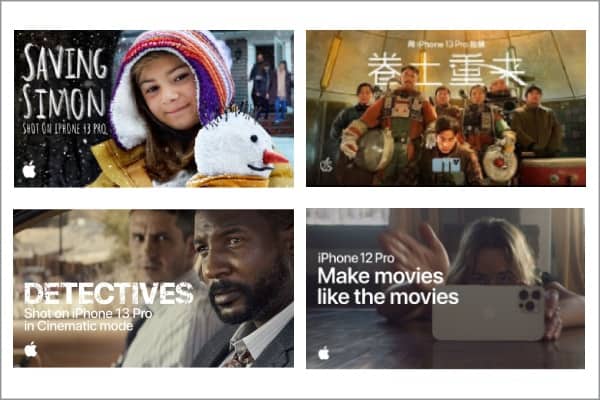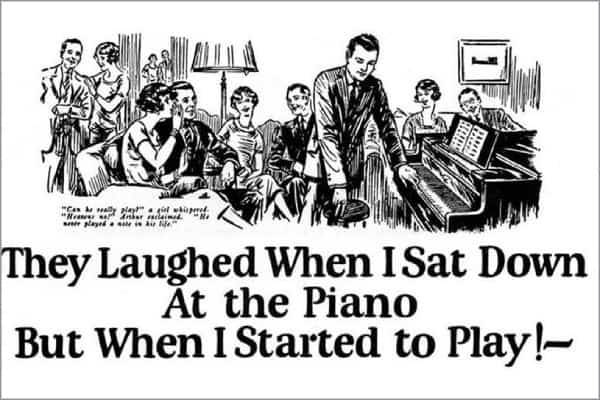Storytelling is right at the heart of what it means to be human.
I bet the first cave people sat around their smoky fires, telling stories about how they got away from the sabre tooth tiger or what happened when the velociraptors chased them. Nowadays we have books, theatre, movies, Netflix. The things celebrities do. The gossip we share with friends on the phone. Or at the water cooler in the office, when we’re allowed to go to the office.
All of these are built on stories. And storytelling is just as important in marketing as it is in the rest of life.
1. What is storytelling in marketing?
It’s as simple as it sounds – you tell stories. There’s less upfront selling, less focus on your product or service, and more on the people who use it. Generally, a marketing story will have one or more characters facing a challenge, which they managed to overcome with the help of whatever you’re promoting.
For example, imagine you’re a pest control company.
People don’t want to hear about ticks.
Instead, tell a story about a child with a sick dog. The child’s worried about her pet. The vet removes a tick, the dog gets better, but the child’s still scared it might happen again. She doesn’t want the dog to go outside. Only when the pest controller comes and treats the garden does she know her beloved dog is safe, and both of them can play happily outside. That’s storytelling.
2. Why does storytelling work?
People like people. They like them far more than they like numbers or statistics. And stories are about people.
Think about the news. Whether it’s a car accident; scaling Mount Everest or discovering a new vaccine, we want an eyewitness account. Statistics and facts are not ‘real’ to us emotionally in the way a human story is.
In the same way, Elon Musk has 5 or 6 times as many followers as Tesla. Why? He’s a human. An individual. We make an emotional connection.

Never forget, people buy on emotion first, then justify on data afterwards. The story is the emotion.
3. How is storytelling in marketing different from normal storytelling?
Let’s start by looking at a non-marketing story. A Christmas Carol, by Charles Dickens. This story has a very clear message.
Don’t be mean. Share. It will make you happier.
But the story is what sweeps us along, not the message.

Storytelling in marketing is similar. The story has to be compelling, but there’s always a message behind it. The story is designed to show off your service, your product, your business, you!
If you want to tell the right story, in the right way, there’s a few things you need to look at.
- What’s the message you want to share? It could be specific capability. Or the way you go above and beyond the call of duty, even outside office hours. Or how deep your expertise is. But if you don’t know what your message is, no one will understand it!
- Who are your audience? Some people will never go to a horror movie, others hate romances. Others just don’t like movies and would rather read the book. (Truly! There are some diehards out there.)
A well planned story will have a format (text, video, audio, images) which the audience uses regularly. - What format(s) are you planning to use?
Books for young children always have lots of pictures. The audience isn’t (yet) comfortable with words. Adults, who are comfortable with words, read fast. Too many pictures could distract them and slow them down when they want to know what happens next. - What’s the hook?
People don’t just start reading your story blog because it’s there. You need something to capture their attention. That’s one reason headlines and blog titles are important.
4. How do you find stories to tell?
Stories need people just as much as people need stories. If you want to find a story to tell, go where the people are. Customer service. Operations. Sales. These parts of your business deal with people as people. They come across good stories all the time.
You may already have more stories than you realise. When I interview people for their blogs, I ask questions about the topic. More often than not, the speaker explains by telling me a ‘for example’ story. That’s gold! That’s how you get story posts like this one for KLH Conveyancing.
You can also think about the early days of your business. Founder stories are popular. They show someone with a bright idea who struggles but keeps going, then finally succeeds. That’s a classic hero – challenge – success storyline.
5. Some common mistakes to avoid
Just because lots of people do something, that doesn’t mean they do it well. So how do you get your storytelling right?
- Make sure it’s not all about you!
You’re not the hero. The customer is. Make it about them. The customer is Luke Skywalker You can be more like Yoda, advising, encouraging and supporting. - Make sure something happens! Your hero needs a challenge to overcome.
- Don’t try to be perfect.
Most of us don’t like perfect people. We like them flawed – not too much, but a little bit! It makes them human. So don’t worry about your make-up, your weight or how you respond to the camera. Just be you, telling your story.
Of course you need a plan so you can get your message across, but don’t fret about every single detail. (Unless you’re a very precise lawyer or accountant and that’s your message!) - You don’t have to go big budget.
If you search online for examples of storytelling, there are lots of clever videos from multinational corporations, all with fantastic production values. The weep-inducing story from Google just below is a good example. But that isn’t the only way to do it. You can tell stories on a podcast with no external cost at all. You can post to social media at next to no cost. A good story will get out even without money behind it.
Some storytelling examples to inspire you
Let’s start big budget, then look at some examples it might be easier to copy.
This heart-warming Reunion story tells how a young Indian woman uses the power of Google to find her grandfather’s childhood friend. The message is there for all to see, but it’s second to the story.
Apple
You probably know about ‘Shot on iPhone‘. One of the most successful and longest lasting campaigns ever.

At first glance, it looks like a varied collection of images and videos, with no overarching story. But think about the message. And that tagline. ‘Shot on iPhone‘. This is a story about enabling creativity and storytelling. It’s perfectly designed for Apple’s core target market of creatives. No wonder it’s still going strong.
Learning to play the piano
This one is much older. A true classic of copywriting.

The image only shows the opening line, but click through and read the copy. You can see how it’s a story full of human interest, with a hero and all the challenges he overcomes.
What about ideas you can copy yourself?
Let’s finish with some simple, day-to-day examples of storytelling. So simple, you may never have thought of them as stories – but they are!
Before and after shots

Weight loss. House renovations. Makeovers. They all use before and after shots to tell the story visually. Look, it was like this with all these problems, and now it isn’t. Now it’s great. That’s storytelling in action.
Case studies and testimonials
A good case study starts with a problem. There’s something which needs to be fixed, and your product or service helps fix it. Once again, it’s a story.
Testimonials can work in a similar way.
Spell out the story in the pictures
If you have a project portfolio page with lots of images and no words, consider adding a few sentences to help set the scene and tell the story.
Bring in emotions
It’s really easy to talk about what you did for a client, but that’s factual rather than story-based. Instead, try a new angle:
- Why were they looking for help in the first place? They must have been unhappy, or frustrated. Or there was something particular they wanted.
- Why did they choose you over your competition? Was there something you did right?
- How did they feel after you’d completed the work for them? ‘My daughter plays with the dog in the garden every day and they both have such a great time, it warms my heart.’
***
Those are some ideas to get you started. If you’re still stuck, why don’t we have a chat about it? I bet you’ve got some stories hidden inside you which just need polishing up!






